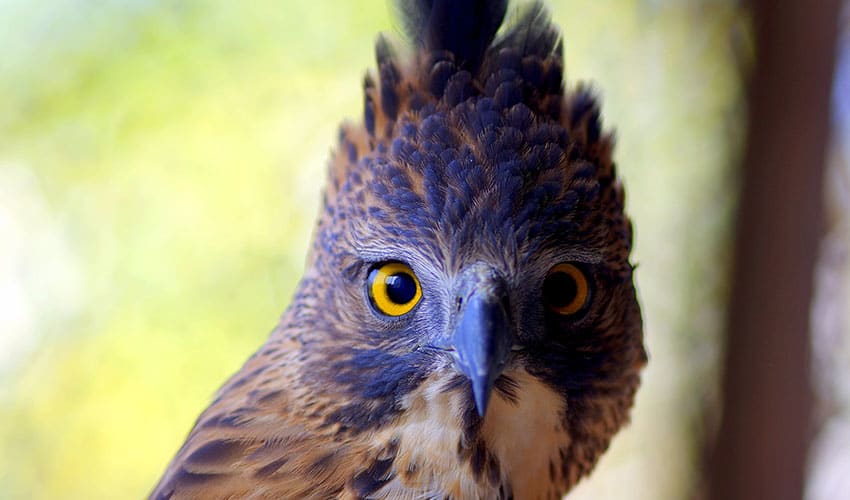Nisaetus – Hawk-eagles
Their name is derived from Greek, meaning "forest eagle," reflecting their preference for wooded habitats
The genus Nisaetus, commonly known as the Hawk-Eagles, encompasses a group of raptors renowned for their agility, strength, and impressive hunting skills. These birds of prey are primarily found in the tropical forests of Asia, where they play a vital role in maintaining the ecological balance. Among the members of this genus is the Javan hawk-eagle, a symbol of Indonesia’s natural heritage.
Hawk-eagles of the genus Nisaetus are medium—to large-sized birds of prey known for their powerful build and striking appearance. They typically have broad wings, strong talons, and sharp, hooked beaks adapted for tearing flesh. Their plumage varies among species but often includes a mix of browns, whites, and blacks, with distinctive patterns that provide excellent camouflage in their forest habitats. One of the most notable features of many Nisaetus species is their crest of feathers on the head, which can be raised or lowered. This crest adds to their majestic appearance and can serve various purposes, such as signaling to other birds or intimidating rivals and predators.
These eagles are skilled hunters, relying on their keen eyesight and powerful flight to catch prey. Their diet mainly consists of small to medium-sized mammals, birds, and reptiles. They hunt from perches, using their sharp talons to precisely grasp and kill prey. These raptors are solitary hunters, typically patrolling their territories alone or in pairs. Their hunting strategy often involves soaring above the forest canopy or sitting silently on a high perch, waiting for an opportunity to strike.
Species in this genus
Flores hawk-eagle
For years, people thought it was just a young changeable hawk-eagle
Javan hawk-eagle
The official bird of Indonesia, symbolizing the country’s commitment to conserving its wildlife
Philippine hawk-eagle
One of the most impressive but least known eagles in Southeast Asia
Pinsker’s hawk-eagle
The “crowned stealthy prince” of the Philippine archipelago





